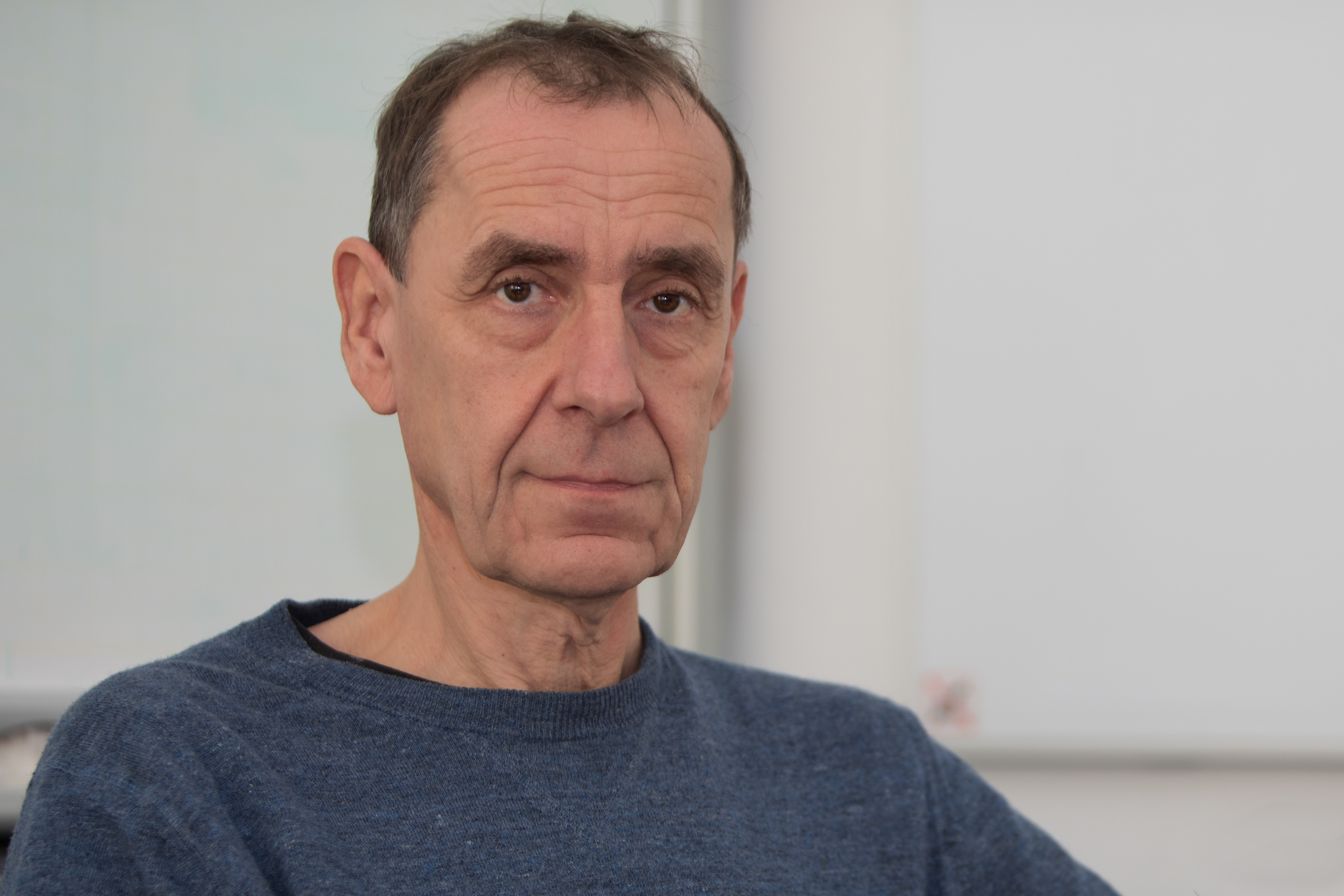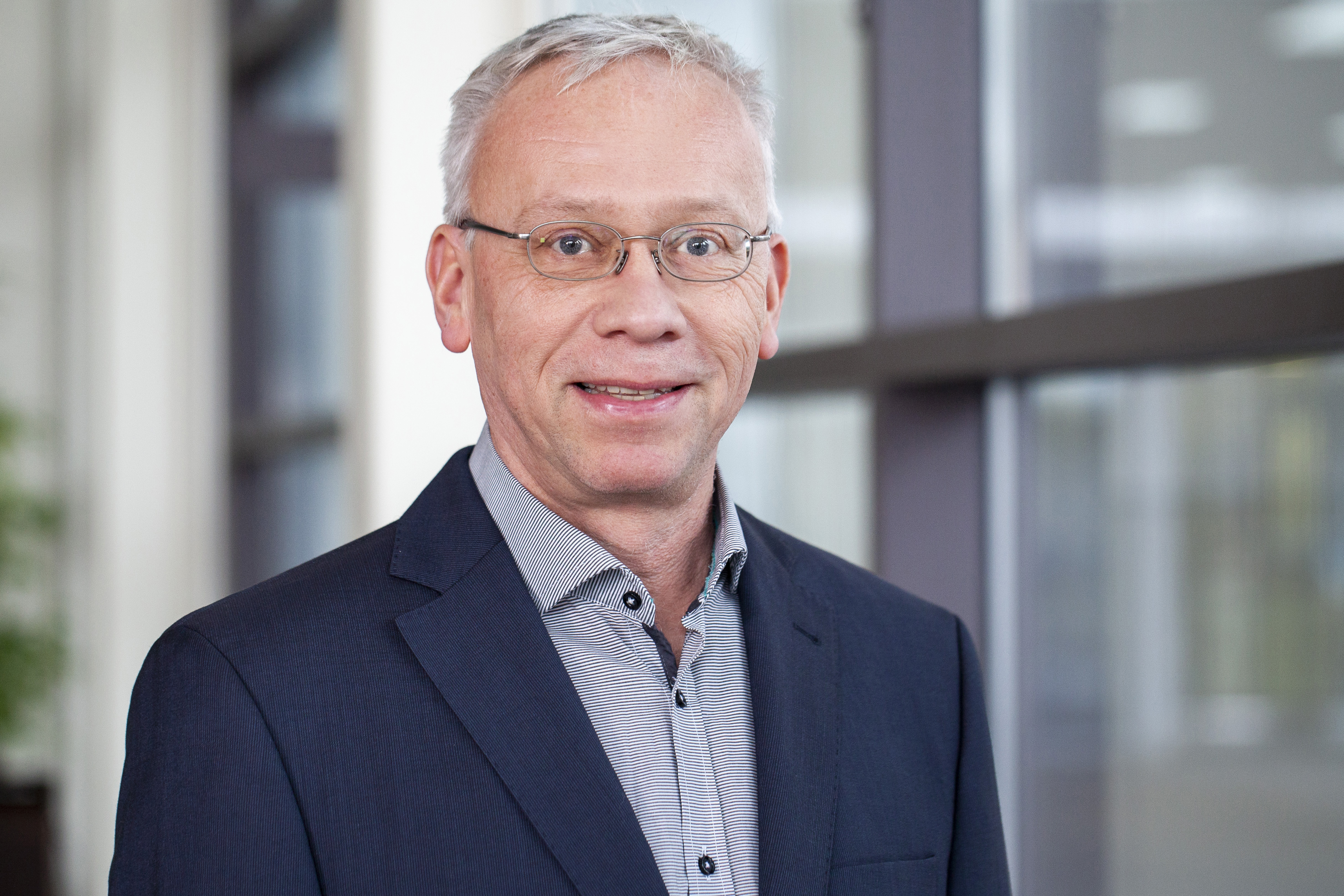While the rollout of the 5G mobile network in Germany is making ever greater progress, research and industry are already working on the next generation of mobile communications: 6G. In this interview, Wolfgang Templ, Group Manager “Radio Transceiver Devices” at Nokia Bell Labs, and Michael Mikulla, Head of the business unit Power Electronics at Fraunhofer IAF, discuss energy efficiency as well as the benefits, risks and hurdles of the future mobile communication.
How do we succeed in developing energy-efficient 6G mobile communication?

Sustainability and 6G — is that not a contradiction?
Templ — No, quite the opposite. After all, 6G aims to improve sustainability and energy efficiency in particular. This is also important for technical reasons. Since excess energy has to be cooled away, many systems are large, heavy and therefore expensive. 5G has already brought progress by a factor of ten, and we expect to achieve even greater improvements in energy efficiency with 6G.
Mikulla — And, of course, it also depends on the application. For example, if you can have operations and repairs done remotely through 6G technologies and save on travel, that is a meaningful contribution. There are many application scenarios where you need the bandwidth, localization capabilities and latency of 6G which can save a lot of energy elsewhere.
Templ — Exactly! Lufthansa in Hamburg, for instance, is already using ultra-high-definition video calls for remote aircraft maintenance. Technicians no longer have to make extra trips. The leverage aspect is huge.
Where is the most energy consumed in mobile communication systems?
Templ — In classic systems below 6 GHz, it is in the transceiver itself. 15 years ago, we still had efficiency values of around 20 percent — which means that only a maximum of 20 percent of the energy could be used. Now, at least in research, we can achieve up to 70 percent. At high frequencies of over 26 GHz and in the millimeter wave range, however, we only achieve about ten percent. These systems have a completely different network architecture; they consist of many small-cell systems with short ranges, and although the individual transceivers have a low output power, the consumption in total is enormous. At this point, we are working together with Fraunhofer IAF to achieve a significant increase in energy efficiency towards 20 percent.
Mikulla — In the “Edge Limit — Green ICT” project, we are trying to find out how much CO2 we could save under real conditions. At 30 GHz, the 20 percent is quite possible at the MMIC level and can be produced in larger quantities. But as the frequency increases, the efficiency decreases significantly. So, if we double the frequency, we are probably only at ten percent.
Templ — Digital signal processing and network control are also very energy-intensive. In the past, for example, a base station was not dynamically adjusted to the traffic load in order to cope with varying traffic volumes. At 2 o’clock at night, there are naturally far fewer calls than during the day. Exploiting these fluctuations in network utilization accordingly is a very important contribution to greater energy efficiency.
Mr. Templ, Nokia Bell Labs says: “6G is designed to connect the human, physical and digital worlds.” What does that mean?
Templ — In principle, it is about technology adapting further to people and giving us a closer human-machine connection. In practice, this means wearables that can be worn in clothing or on the skin. In the more distant future, this will move towards bioimplants and brain computer interfaces. Today, this still sounds very strange to us, but such technologies could make a great deal possible in the medical field. In addition, concepts such as Joint Communication and Sensing, the combination of sensor technology and communication, Digital Twins, natural human-machine interaction or holographic telepresence are also part of this. Video conferencing, like the one we are having right now, will be able to be done in a much more true-to-life way. The more the virtual world is linked with the real world, the more the issues of security and trustworthiness must be woven into these technologies.
It sounds like machines will increasingly take control in the future.
Templ — I can understand very well if some terms make us feel uneasy — because, like most technologies, they can also be misused. Given their overwhelming benefits, we should not ban such technologies, but we must communicate this problem and deal with it responsibly. Only if misuse is likely and the consequences would be severe, may you have to decide not to use a technology. But I fear that any technology that can be realized will be realized. And if people refrain from it due to their sense of responsibility, someone else will do it.
What key technologies are we working on right now?
Mikulla — At Fraunhofer IAF, we develop components and can offer high-end solutions at a technologically high level that cannot be bought yet. Of course, we cannot equip networks, but for companies like Nokia we can try things out in the lab under realistic conditions. That gives us a certain edge, or in other words, it allows us to take a shortcut in the development of complex systems. We also develop high-quality components for measuring devices that are needed for the development of components. Here, we are planning a very close cooperation with Rohde & Schwarz within “IPCEI“. And this year, together with our partners, we will launch a GaN-based power amplifier into space in the “EIVE“ project, which will transmit higher data streams for the first time in the E band and under real conditions.
What are the biggest technological challenges in 6G development?
Templ — Generally speaking: “the higher the frequency and bandwidth, the shorter the range.” Propagation conditions are approaching those of optical line-of-sight links and this makes the design of the system architecture very difficult. In addition, the architecture of the data processing must be optimized, always taking into account the all-embracing topic of energy efficiency.
What comes after 6G?
Both — 7G! (laughing)
Is it even possible to go any faster?
Mikulla — The other day I heard that when Goethe traveled by stagecoach from Carlsbad to Italy in 14 days, he spoke of an “inhuman speed!”
Templ — About ten years ago, it was still said that the fastest way to move 10 TB of data from Munich to Hamburg would still be to transport the hard drive by car. Today, that is no longer the case; our networks can handle it.
Mikulla — We as humanity are adapting and we are also changing. Our children’s generation will be different from ours. You don’t have to be afraid of that, but you can’t predict it.
 Fraunhofer Institute for Applied Solid State Physics IAF
Fraunhofer Institute for Applied Solid State Physics IAF